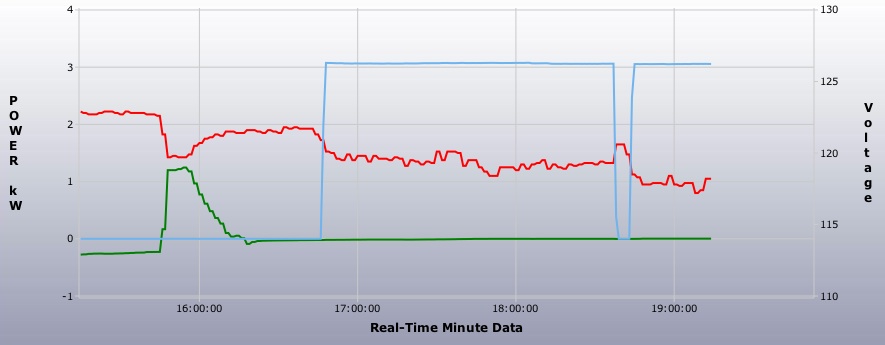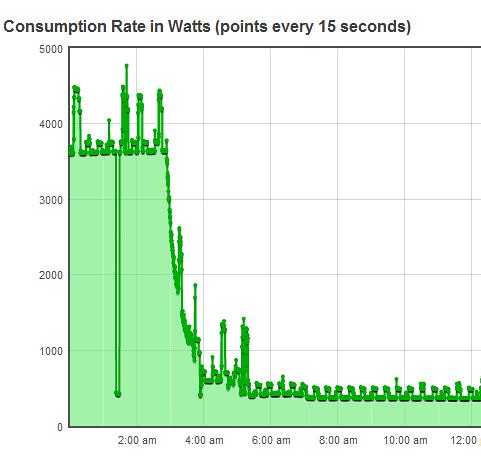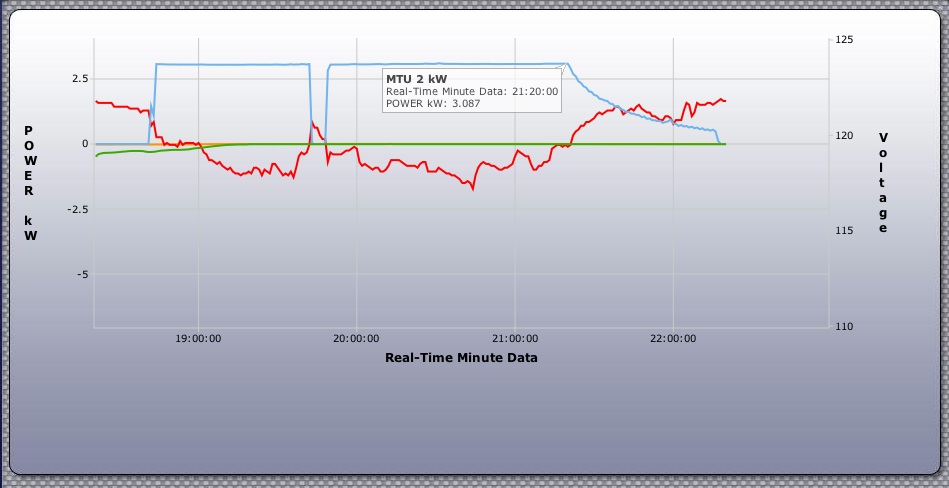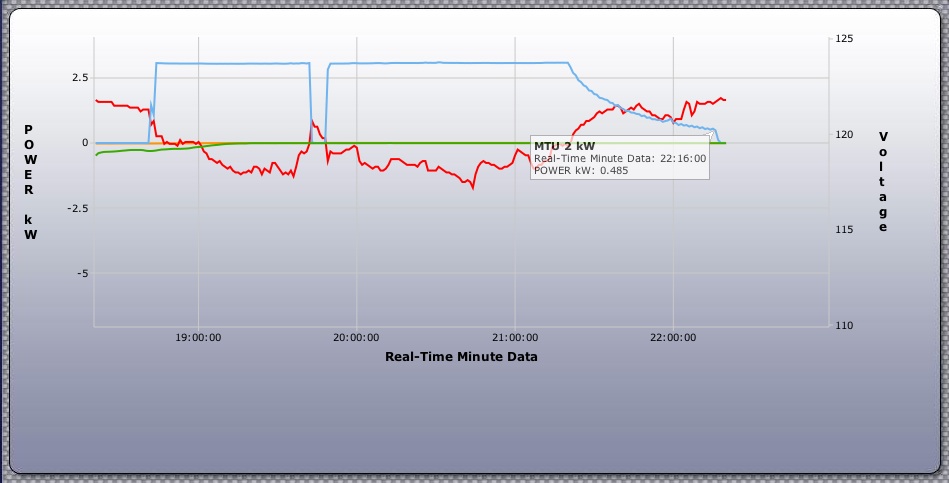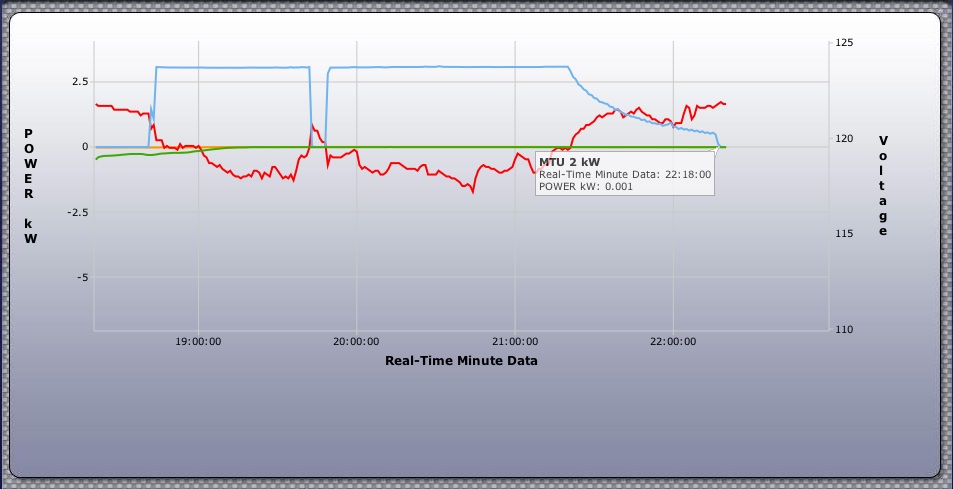We had discussed the charge interruption on a number of other threads, and I see that I had forgotten to update this one. I had posted these screenshots off my TED5000 display (taken on the evening of 22 March, 2012) elsewhere, but am repeating them here -
The
red line represents line voltage and is the nominal 120vac off one of the two power input legs.
The
green line (kW) is the day's tail end of my solar generation, showing it decaying to zero as it got dark.
The
orange line (kW) represents my other EV charging and is showing zero as nothing was charging.
The
blue line (kW) represents my iMiEV, charging at a nominal 240vac.
You can see that about an hour into the charging process the charger paused for a few minutes by itself before starting back up. This is normal, and I surmise that this is part of the BMS testing to see if any cell(s) exhibits an inordinate voltage drop when power is removed. At the end of charge you can see that from the point the power draw starts to decay to the actual cut off by the charger the time is about an hour.
In their cell monitoring unit update reprogramming last year, Mitsubish evidently changed the timeout duration from a nominal ten minutes to six minutes, although I've seen longer durations occasionally, but have never seen TWO timeouts in one charging session.
Don said:
I told my wife I could easily spend nearly as much money and the better part of a year of my time and still not be able to build an EV half as good as this one.
OT. As the owner of two EV conversions and a couple of spartan high-performance single-seater Sparrows, I completely agree with Don that a DIY conversion of an older vehicle nowadays is definitely not cost-effective (but it's a great father-son/daughter technical project). Don't forget, there were virtually no production EVs available for years, and an EV conversion was the only game in town. We're at the dawn of a new era...
